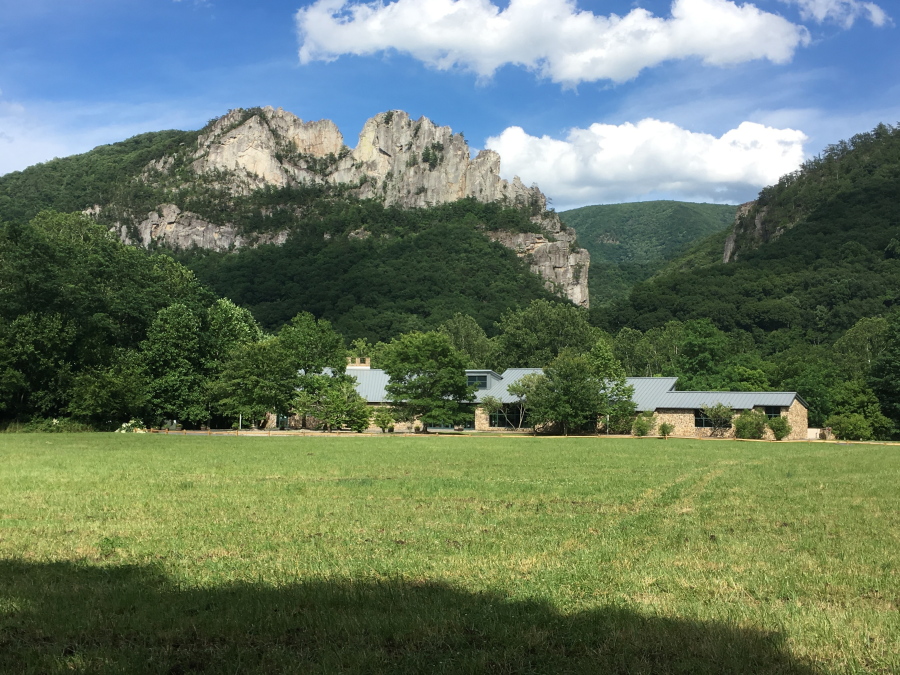SENECA ROCKS, W.Va. — The pale ridge rises like the ragged fin of a prehistoric fish in a rolling green sea of low forested mountains in eastern West Virginia.
Massive and intimidating, the craggy landscape of Seneca Rocks draws serious rock climbers to its fiercely vertical routes. The mountaintop once hosted American combat troops training to fight in Italy’s Apennine Range during World War II.
Despite its daunting appearance, guides say this is a good place to introduce novices to a challenging but manageable ascent.
“It lends itself to mellow climbing,” said Adam Happensack, who led a threesome of mixed skill levels to the summit recently. “It’s like the coolest exposure you’ll get for this grade of climbing.”
From the Monongahela National Forest Discovery Center terrace, through a binocular scope, you can watch climbers nearly a half-mile away ascend the west face. The peak rises 900 feet above a fork of the Potomac River below. Visitors can splash in the river, hike forest trails and stay in campgrounds or an old motel. The nearby hamlet has two combination general stores and restaurants.
Seneca Rocks viewed from the ground spears the sky with its gray quartzite, but becomes more intimate and breathtaking on the way to the top. You hear the birds and soft thrum of the wind through the hardwood forest, and occasional yells from climbers belaying partners on safety ropes.
Happensack led climbing partner Phil Brown and me up a seven-pitch patchwork of easy routes to the top, including the Skyline Traverse. Many handholds and steps were obvious jugs of rock. No pitches were rated higher than 5.4 in the Yosemite Decimal System for technical climbing that ranges from 5.1 to nearly impossible 5.15.
One well-known feature is that traverse with little more than a few steps around a rock column into a three-sided chimney with obvious holds. However, the first moves require stepping over about a 100-foot drop.
“It’s like the scariest thing a beginner can get into,” said Happensack.
He cautioned that those initial footholds are worn and slippery from decades of boots and climbing shoes.
It took me a long, slow, breathless minute to follow him: testing the leaning traverse across the space, trying to grip the narrow crack on one side and fumble toward something to hold on the other with arms spread wide; trusting that the slightly smooth step below wouldn’t simply slide you into space.
This is what climbers call exposure — where there would be a high risk of injury or even death from a false step without protection. You have to trust the rope and go.
The next day Brown led me up Old Man’s Route. Rated only 5.3 for difficulty, it consists mostly of what looks like a giant stairway along the cliff face ending in a 50-foot vertical corner to the summit ledge.
At the base, 33-year-old Lindsey Enterline, pregnant with her first child, prepared to do it with a friend. A climber for seven years, her obstetrician told her to keep doing what she was doing but not start anything new. She’d chosen the easy route instead of the harder climb her husband and other friends from Hershey, Pa., took on.
“I’ve done the route before, and it’s one that I won’t fall sideways — or do the traverse,” she said. “I just make sure it’s safe. And you have to have cool trust in the people you’re climbing with.”



